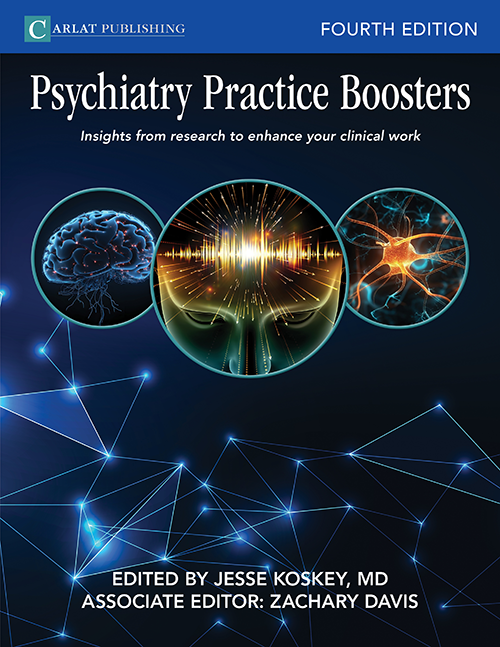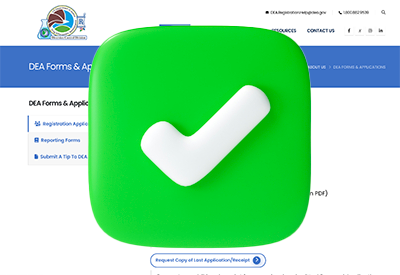Home » Wilderness Therapy: Dangerous Waste of Money or an Effective Therapeutic Intervention?
Wilderness Therapy: Dangerous Waste of Money or an Effective Therapeutic Intervention?

January 1, 2019
From The Carlat Child Psychiatry Report
Caroline Fisher, MD
Dr. Fisher has disclosed that she has no relevant financial or other interests in any commercial companies pertaining to this educational activity.
Wilderness therapy programs, aka “outdoor behavioral health programs,” purport to offer structured outdoor experiences for adolescents or adults that lead to psychological shifts and better functioning. Programs vary in length from a few days to months, although 30–90 days is common. The outdoor experiences include camping, canoeing, hiking, rock climbing, and sailing. While engaging in these activities, participants receive formal and experiential therapy from trained professionals.
In most programs, attendees may continue to take any medications they’re already on, and there is a prescribing consultant who may change dosing or medications if needed; however, the emphasis is more on the program elements and not medication management or adjustment. Think summer camp with a therapy twist: Attendees might first talk about cognitive distortions, then address their own on a 300-foot zipline, or practice mindfulness while walking up a mountain and being surrounded by nature.
Various wilderness programs have a “typical” participant profile that they do best with, and treatment often centers around that profile rather than specific mental illnesses. Families generally pay out of pocket, with fees running from a few thousand dollars to more than $30,000. “The outdoor experience is a way to engage people who wouldn’t necessarily want to engage in treatment otherwise,” says Dr. Michael Gass, director of the University of New Hampshire Outdoor Behavioral Healthcare Center, a research consortium. The center’s website, with links to safety data, such as use of restraint, injury and illness, and outcomes, can be found at https://www.obhcenter.org.
How is this therapy supposed to help?
The theory of change for wilderness programs is a complex model in which living in nature provides three advantages: separateness from “real life”; inherent challenge and danger; and a sense of peace. Removed from their usual relationships, participants have both the need and the flexibility to create new relationships. They bond quickly and closely with other participants and therapists, sharing intimate details, free from the self-enforcing patterns and interactions of their usual lives. You can’t argue with your mom if your mom isn’t there to argue with.
While on an adventure, the stigma of treatment is alleviated, and it feels more natural to talk about issues. The challenge of nature allows everyone to focus on how each person helps or hinders themselves and the group, and people develop a sense of self-efficacy as they learn to work within the outdoor context. Finally, the peaceful beauty provides a space free of distractions in which participants can think about their lives and priorities.
It remains unclear how one decides whether a particular patient might benefit from wilderness therapy, and once a patient returns from a program, the known duration of any benefit afterward is similarly unclear.
Are wilderness camps effective?
Does outdoor behavioral therapy work? One meta-analysis found an effect size of 0.8 (large) using improvement on the Youth Outcome Questionnaire, measuring intrapersonal distress, somatic distress, interpersonal relationships, social problems, and problematic behaviors, as well as critical items like hallucinations and suicidal ideation; however, this questionnaire does not identify specific diagnoses (Gillis HL et al, Child & Youth Care Forum 2016:45(6);851–863). By contrast, wraparound programs, a more limited version of assertive community treatment where providers collaborate in an organized manner, were found to have an effect size of 0.33 (small) on the same measure.
In a fairly exhaustive meta-analysis of wilderness activity therapy, researchers found an overall effect size of 0.47 (moderate) across multiple outcomes, with a smaller effect size for younger children and a larger effect size for older teens and adults; in comparison, they found little or no effect across non-wilderness-based alternative programs and the control group receiving no treatment (Bowen DJ and Neill JT, The Open Psychology Journal 2013;6(1):28–53). However, both wilderness and wraparound programs are difficult interventions for meta-analyses because of inconsistencies across programs and studies.
How dangerous are these programs?
Since 2002, when her 15-year-old daughter died while participating in a wilderness program, Cynthia Harvey has been an outspoken critic of the industry. She and other parents have created a website called Alliance for the Safe, Therapeutic and Appropriate Use of Residential Treatment (ASTART) to warn families about their experiences, citing congressional testimony and reports of teens who have died in the custody of private-pay wilderness and residential treatment programs.
Deaths have resulted from two main types of causes: staff not recognizing acute medical situations such as dehydration and therefore failing to intervene; and face-down or other dangerous restraints. These are the same preventable problems that plague residential treatment, public and private schools, acute inpatient units, and state hospitals. Such outcomes generally result from poorly trained and poorly supervised staff.
In contrast, Dr. Gass cites the voluntary accreditation standards that many programs adhere to, ensuring both appropriate staff training and professional credentialing in mental health treatment as well as outdoor safety and wilderness first aid. “[Wilderness programs] used to be dangerous,” he says, “but now they’re no more dangerous than staying home.”
Are wilderness or private residential treatment programs worse? The answer lies in failure of regulation. While publicly sponsored and conventional insurance-based residential programs are regulated and inspected, private programs often are not, allowing some unethical providers to exploit a desperate population. Deceptive websites drive worried parents into “selecting” wilderness programs from a single provider. Programs may limit costs by using poorly trained or unqualified staff, and they may use practices that are not rigorously evidence-based or that are abusive.One example of a practice used in some camps is the “tough love” approach, long disproven but still promoted. In this approach, kids are subjected to very rigid rules with significant and escalating consequences for breaking them. Tough love appeals to families who are frustrated with difficult adolescent behavior and mistakenly believe it can be stopped with sufficient punishment. However, this tactic is known to be detrimental, and it has spawned several programs that have been investigated or shut down for “consequences” that amounted to child abuse. With poor regulation, particularly in programs outside the US, horror stories abound, including teens being starved, beaten, and forced into dog crates for misbehavior. Parents and providers are right to be worried and need to do their research carefully.
What do we tell parents?
Here’s a brief four-point checklist we can share with parents who are considering wilderness therapy for their child:
CCPR Verdict: Good wilderness therapy programs may engage participants productively, although the criteria for who will benefit most and the expected outcomes are unclear. However, bad programs are out there, so families should do their research, understand what they are getting, and know whether they can afford the cost.
Child PsychiatryIn most programs, attendees may continue to take any medications they’re already on, and there is a prescribing consultant who may change dosing or medications if needed; however, the emphasis is more on the program elements and not medication management or adjustment. Think summer camp with a therapy twist: Attendees might first talk about cognitive distortions, then address their own on a 300-foot zipline, or practice mindfulness while walking up a mountain and being surrounded by nature.
Various wilderness programs have a “typical” participant profile that they do best with, and treatment often centers around that profile rather than specific mental illnesses. Families generally pay out of pocket, with fees running from a few thousand dollars to more than $30,000. “The outdoor experience is a way to engage people who wouldn’t necessarily want to engage in treatment otherwise,” says Dr. Michael Gass, director of the University of New Hampshire Outdoor Behavioral Healthcare Center, a research consortium. The center’s website, with links to safety data, such as use of restraint, injury and illness, and outcomes, can be found at https://www.obhcenter.org.
How is this therapy supposed to help?
The theory of change for wilderness programs is a complex model in which living in nature provides three advantages: separateness from “real life”; inherent challenge and danger; and a sense of peace. Removed from their usual relationships, participants have both the need and the flexibility to create new relationships. They bond quickly and closely with other participants and therapists, sharing intimate details, free from the self-enforcing patterns and interactions of their usual lives. You can’t argue with your mom if your mom isn’t there to argue with.
While on an adventure, the stigma of treatment is alleviated, and it feels more natural to talk about issues. The challenge of nature allows everyone to focus on how each person helps or hinders themselves and the group, and people develop a sense of self-efficacy as they learn to work within the outdoor context. Finally, the peaceful beauty provides a space free of distractions in which participants can think about their lives and priorities.
It remains unclear how one decides whether a particular patient might benefit from wilderness therapy, and once a patient returns from a program, the known duration of any benefit afterward is similarly unclear.
Are wilderness camps effective?
Does outdoor behavioral therapy work? One meta-analysis found an effect size of 0.8 (large) using improvement on the Youth Outcome Questionnaire, measuring intrapersonal distress, somatic distress, interpersonal relationships, social problems, and problematic behaviors, as well as critical items like hallucinations and suicidal ideation; however, this questionnaire does not identify specific diagnoses (Gillis HL et al, Child & Youth Care Forum 2016:45(6);851–863). By contrast, wraparound programs, a more limited version of assertive community treatment where providers collaborate in an organized manner, were found to have an effect size of 0.33 (small) on the same measure.
In a fairly exhaustive meta-analysis of wilderness activity therapy, researchers found an overall effect size of 0.47 (moderate) across multiple outcomes, with a smaller effect size for younger children and a larger effect size for older teens and adults; in comparison, they found little or no effect across non-wilderness-based alternative programs and the control group receiving no treatment (Bowen DJ and Neill JT, The Open Psychology Journal 2013;6(1):28–53). However, both wilderness and wraparound programs are difficult interventions for meta-analyses because of inconsistencies across programs and studies.
How dangerous are these programs?
Since 2002, when her 15-year-old daughter died while participating in a wilderness program, Cynthia Harvey has been an outspoken critic of the industry. She and other parents have created a website called Alliance for the Safe, Therapeutic and Appropriate Use of Residential Treatment (ASTART) to warn families about their experiences, citing congressional testimony and reports of teens who have died in the custody of private-pay wilderness and residential treatment programs.
Deaths have resulted from two main types of causes: staff not recognizing acute medical situations such as dehydration and therefore failing to intervene; and face-down or other dangerous restraints. These are the same preventable problems that plague residential treatment, public and private schools, acute inpatient units, and state hospitals. Such outcomes generally result from poorly trained and poorly supervised staff.
In contrast, Dr. Gass cites the voluntary accreditation standards that many programs adhere to, ensuring both appropriate staff training and professional credentialing in mental health treatment as well as outdoor safety and wilderness first aid. “[Wilderness programs] used to be dangerous,” he says, “but now they’re no more dangerous than staying home.”
Are wilderness or private residential treatment programs worse? The answer lies in failure of regulation. While publicly sponsored and conventional insurance-based residential programs are regulated and inspected, private programs often are not, allowing some unethical providers to exploit a desperate population. Deceptive websites drive worried parents into “selecting” wilderness programs from a single provider. Programs may limit costs by using poorly trained or unqualified staff, and they may use practices that are not rigorously evidence-based or that are abusive.One example of a practice used in some camps is the “tough love” approach, long disproven but still promoted. In this approach, kids are subjected to very rigid rules with significant and escalating consequences for breaking them. Tough love appeals to families who are frustrated with difficult adolescent behavior and mistakenly believe it can be stopped with sufficient punishment. However, this tactic is known to be detrimental, and it has spawned several programs that have been investigated or shut down for “consequences” that amounted to child abuse. With poor regulation, particularly in programs outside the US, horror stories abound, including teens being starved, beaten, and forced into dog crates for misbehavior. Parents and providers are right to be worried and need to do their research carefully.
What do we tell parents?
Here’s a brief four-point checklist we can share with parents who are considering wilderness therapy for their child:
- Keep expectations realistic. Wilderness therapy may improve overall functioning, but it is no cure for mental illnesses, nor will it help a parent-child relational problem. Some teens don’t like the setting, even if the program itself is well-run and nurturing. If the teen hates dirt and cold and is terrified of wild animals, consider something else.
- Ensure the family can afford the therapy. Many families overextend themselves, thinking it will be a magic bullet.
- Be sure the program is well-researched. Deceptive websites and high-pressure sales tactics abound, so families might want to use an independent consultant who has visited each program, receives no incentive for placement from the programs themselves, and has reports from families and participants about their experiences with recommended programs. These consultants can be found through professional associations like the Independent Educational Consultant Association or the Independent Therapeutic Consultant Association.
- Be certain the program uses evidence-based therapeutic approaches. Staff should be qualified in wilderness first aid as well as the therapeutic approach used in the program, and programs should be able to give you a list of staff and their qualifications, as well as a clear philosophy and programming schedule. Expectations regarding family communications should be clear. Many quality programs have a recordkeeping system that allows families to track their child’s activities and progress using an electronic portal. The Association for Experiential Education (offers voluntary accreditation with explicit standards for maintaining safe and effective programs. Many programs also participate in ongoing research on outcomes and safety.
CCPR Verdict: Good wilderness therapy programs may engage participants productively, although the criteria for who will benefit most and the expected outcomes are unclear. However, bad programs are out there, so families should do their research, understand what they are getting, and know whether they can afford the cost.
Issue Date: January 1, 2019
Table Of Contents
Recommended
Newsletters
Please see our Terms and Conditions, Privacy Policy, Subscription Agreement, Use of Cookies, and Hardware/Software Requirements to view our website.
© 2025 Carlat Publishing, LLC and Affiliates, All Rights Reserved.


_-The-Breakthrough-Antipsychotic-That-Could-Change-Everything.jpg?1729528747)



